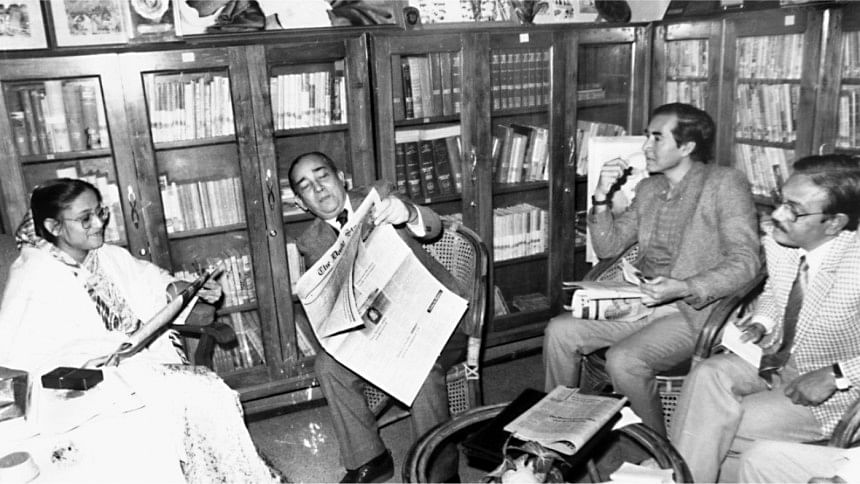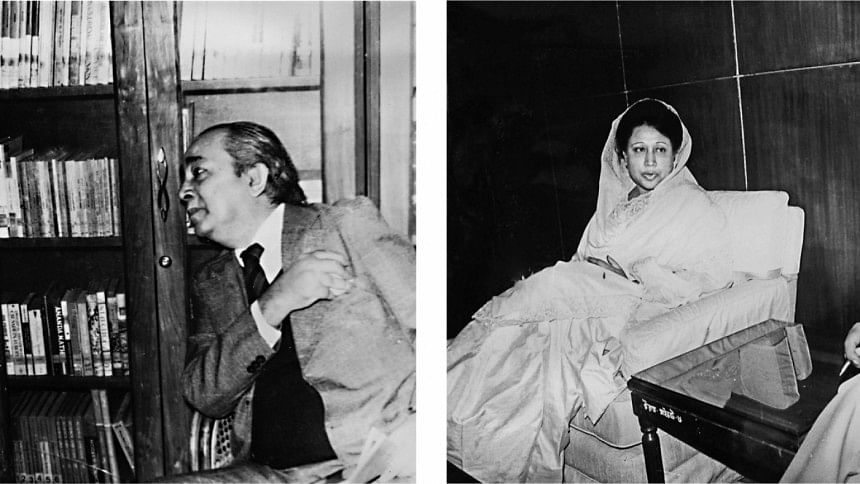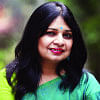The Taste of Freedom

There is a cliché that announces that the 'truth will set you free' but it is probably the most apt description of what happens when you step into the world of writing and journalism. Writing what you believe to be true does in fact liberate you in many ways and this is possibly what every young apprentice who joins a daily newspaper experiences.
As a complete novice, with only an Economics degree in the way of credentials, I entered the rather quaint but spacious floor of the first Daily Star office in Toyenbee Square, Motijheel. After being duly dazzled by my would be bosses – then the executive editor Mahfuz Anam (later the editor and publisher) and editor S M Ali, I was introduced to those with whom I would be sharing the side of the floor that housed the features and editorial sections. I met Wahidul Haque, the joint editor, a bespectacled, benign looking man with wisps of white hair who, I found out, was also quite the firebrand and known as a 'walking Encyclopedia'. His expertise ranged from Rabindra Sangeet to nuclear physics and he read books on Mathematics for fun. Thankfully, I didn't know all that and hence was not in the least intimidated. He was given the irksome task of being my mentor – to give me topics to write on and then critique them. I remember his slightly irritated comment on my first piece on road accidents: "You know when you write a creative piece, try to avoid the bland and obvious – like 'accidents are rising at an alarming rate'". I was a little crushed but duly put in place with the knowledge that I was just a freshman in the "university of life", which my experience at this paper became.
There were other interesting characters on this floor. I shook hands with a sharp looking young man, named Sabir Mustafa. I asked Rahat Mustafa, a feature writer and a school friend: "So who is that cute boy?" She giggled mysteriously and said he was the Assistant Editor! I met Mashuqul Huq, (Mashuk Bhai) whose sweet, soft-spoken demeanour belied his astute editing eye and sharp wit. Then there was Fayza Apa, a senior journalist who had worked at the Dawn, who became our feature editor. We were both wary and in awe of her as she spewed out French and Urdu during angry outbursts and unabashedly smoked with the boys in the newsroom. Inside she was a complete gem, a prolific reviewer of art, a regular Santa Claus spoiling the entire office with extravagant gifts and 'gateau'. There was also Madan Sahu who, among other things, was in charge of the weekend magazine – at that time two pages in broadsheet for which we, feature writers wrote. Then I met Sona Bari from Geneva, who had created quite a buzz with her heart wrenching coverage of the 1991 April cyclone from Cox's Bazar.

With the newsroom and Features being on the same floor, interaction between reporters and feature writers was inevitable and we all became great friends including Raffat Binte Rashid who joined as sub editor and Sharier Khan (apparently a reporter but much better known as a talented cartoonist and innovative prankster).
Bringing out a paper in the newly democratic political process influenced the way the paper was run. There was an implicit feeling of freedom, of boldness that was new to the industry and The Daily Star played the part of the pioneer in the best possible way. It was our very inexperience that gave us the temerity to try out new things while trying to adhere to the standards set by our editors who had international exposure and a sophistication that gave the paper an edge over others.
Personally, the Motijheel office was like being Alice in her Wonderland. Apart from my one piece for a daily column Dhaka Day By Day, which we, feature writers wrote by rotation, I did not have much to do. I decided to utilise my freedom to the fullest, taking a rickshaw and roaming around the alleyways of Old Dhaka all by myself, getting a feel of a city that I had grown up in but did not know at all. This actually gave me great ideas for stories and it was always a thrill when our dear founding Editor S M Ali took the trouble of coming to our desks to compliment us on a piece or gently advise how we could improve.
The Dhanmondi Office in Road 3 which we moved into in 1993, was a two storied house and the 'feature section' was given the long verandah overlooking the street. It was here that we learnt to write on anything and everything. We did interviews from celebrities to real estate developers. I was given a special page called Women on the Move – devoted not to recipes and fashion as most 'women's pages' of existing newspapers– but issues of women's rights, something barely reported in the main paper. Our stories gave voices to acid survivors, victims of rape, women freedom fighters etc. They focused on issues of domestic violence, dowry, trafficking and rape. Raffat brought out the Science and Technology page and the Education page. Being novices we had to learn everything from scratch – how to interview people (how to make sure the recorder was recording), how to fact check and verify, how to write good introductions and the hardest task - how to meet deadlines.

But it was a giant leap from adolescence to middle age when I was given the responsibility of bringing out a 32 page A4 sized magazine every Friday in 1996. Thankfully we were blessed with a bright, energetic team, who knew how to tell stories through their excellent writing. Over the years new teams replaced the old ones and thus there was always a fresh batch of young people. A common thread and affection bound us together and every member of the team had something to offer. As expected the concentration of so much talent also resulted in a high level of craziness and the magazine section was often like a Mad Hatter's Tea Party, the Mad Hatter often being the gifted, yet extremely eccentric photographer Zahedul I Khan, a kind of mother hen to the entire team in the guise of a fanatical non conformist.
We had a good mix of columnists, many of whom became published writers. The result was an eclectic collection of features and columns. Columns like Write to Mita and Chintito, had huge fan following.
The magazine, in keeping with the paper's overall ethos, has always been committed to giving a voice to the marginalised, to protest injustice, expose environmental degradation as well as highlight all that is positive in Bangladesh. Cover stories have often been devoted to major achievers - artistes, poets, writers, entrepreneurs, social workers and sportspersons have all been featured. While the paper dedicated special supplements to major national days, the magazine too commemorated them through cover stories and special features. Our experimentation with satire seemed to hit the right chord with our readers and we were generously helped by cartoonists Sharier Khan and later, Sadat Ahmed and contributing cartoonist Tanmoy.

Our move to the Karwan Bazar office in 2000 was a step up as now we were in the media hub albeit it was in the middle of a grimy kitchen market. We were bestowed with temperamental air conditioners and a rooftop cafeteria that was always full though it remained bohemian in terms of hygiene.
From the Star Weekend Magazine (SWM) to the Star to Star Weekend, the magazine has evolved along with the main paper and now being headed by Elita Karim and a revamped team of extremely bright young men and women.
Over the last 25 years many new publications have been added – Lifestyle focusing on fashion and lifestyle trends, Star Campus devoted to university students, Forum that concentrated on analytical, research based articles, Insight that had stories outside the capital, ShowBiz celebrating celebrities, Shout an evolution of the popular young people's magazine Rising Stars and Star Campus. New pages have also been added – Star Literary Review, Law and our Rights, Health, Shift (on cars), Bytes (info-tech) and Next Step (careers). These additions have come about to meet the changing demands of the reader to get something more than just the daily news. Thus the Graphics team has been instrumental in giving the essential creative element in design to these publications. Going with the flow of time, the paper has also gone online, giving it an even wider readership.
Technologically we have come a long way. In the old days most of the copies were handwritten (only the reporters and editors had typewriters) which were then sent to the 'Compose' section, a shrine-like carpeted room and the only one to have air-conditioning. People had to take off their shoes before entering the room that maintained a church-like sobriety in contrast to the rest of the office. Now, writing, editing, pagemake up – everything is done on individual computers and sent directly to the state of the art press.
The most remarkable aspect of The Daily Star is that despite reaching its silver jubilee it is a paper teeming with young people who bring the energy, innovation and enthusiasm needed to keep a newspaper vibrant. Undoubtedly it has a lot to do with the incorrigible youthful energy and drive of our leader Mahfuz Anam.
And now that I have shifted to the more 'age appropriate' role at the Editorial Section I am pleasantly surprised to find another bunch of intellectually stimulating, slightly zany, young men and women.
Few of our young, aspiring journalists, however, will know the ups and downs this paper has gone through when they enter this grand eight-storied, centrally air-conditioned, shiny new Daily Star Centre. When I hear their carefree laughter from neighbouring sections, I know that they are as clueless as I was 25 years ago, that they have already fallen victim to an addiction that compels them to seek the truth, a habit that they will probably never be able to get rid of.

 For all latest news, follow The Daily Star's Google News channel.
For all latest news, follow The Daily Star's Google News channel. 



Comments